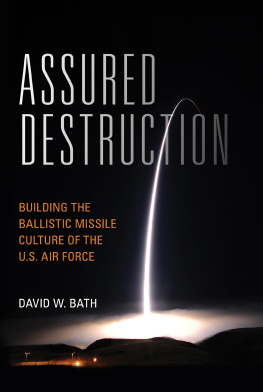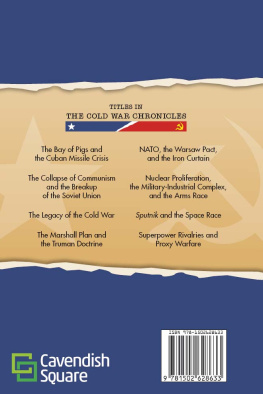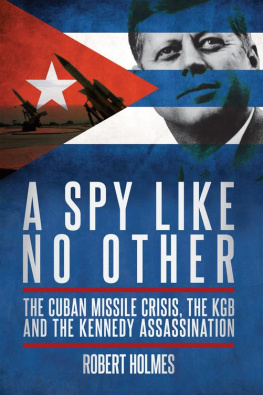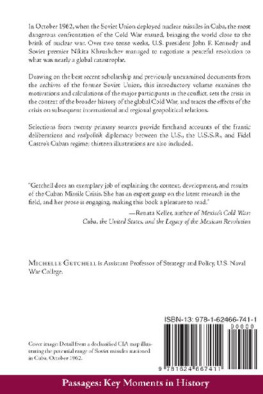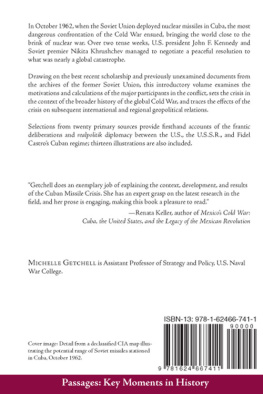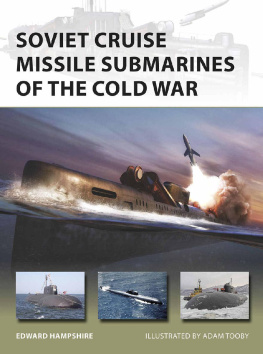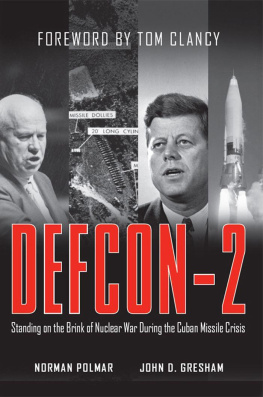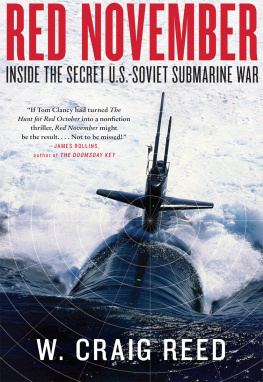


Published by The History Press
Charleston, SC
www.historypress.com
Copyright 2019 by Landry Brewer
All rights reserved
First published 2019
e-book edition 2019
ISBN 978.1.43966.674.6
Library of Congress Control Number: 2018966330
print edition ISBN 978.1.46714.225.0
Notice: The information in this book is true and complete to the best of our knowledge. It is offered without guarantee on the part of the author or The History Press. The author and The History Press disclaim all liability in connection with the use of this book.
All rights reserved. No part of this book may be reproduced or transmitted in any form whatsoever without prior written permission from the publisher except in the case of brief quotations embodied in critical articles and reviews.
For Erin, Dylan, Kelsey, MacKinley, Quinn and Spence.
CONTENTS
FOREWORD
For the past three decades, Americans have been spared the constant fear of nuclear war. However, for generations living during the Cold War, from about 1947 to 1991, the fear of World War III and atomic warheads was real. American officials encouraged the development of atomic weapons that ended World War II. The Soviet Union followed suit, and the arms race began.
The day the world perhaps came closest to the Cold War becoming a nuclear war was October 24, 1962, during the Cuban missile crisis. It was a dangerous and direct confrontation between the United States and the Soviet Union when the U.S. learned Soviets were building missile sites in Cuba, just ninety miles from Florida. President John F. Kennedy harshly threatened the Soviets and demanded the construction stop. The Soviets called an American blockade around Cuba an act of aggression.
On October 24, American reconnaissance flights showed construction of the missile sites was continuing and Soviet ships were sailing to Cuba. President Kennedy told his advisors that it appeared only a U.S. attack on Cuba would remove the missiles. American military forces were raised to DEFCON 2, meaning war involving the Strategic Air Command was imminent. A diplomatic solution was reached, but it was a day when nuclear war between the worlds two superpowers was just one button and one command away for those hovering over control panels at missile sites, including silos built at a dozen sites near Altus Air Force Base, such as those in the southwest Oklahoma locations of Willow, Cache, Granite and Hobart.
In this book, Professor Landry Brewer expertly chronicles Oklahomas role during the Cold War. With first-person information gleaned during interviews with people ranging from missile technicians to civil defense officials, he paints a comprehensive story of how the Cold War affected the daily lives of Oklahomans, particularly in the 1950s and 1960s, when Soviet aggression rose in intensity and little was done to stop the proliferation of nuclear weapons and missile systems. There is even the little-known tale of a Soviet spy who was educated at the University of Oklahoma and joined the faculty in Norman.
In addition to the exciting story of constructing and arming missile silos in Oklahoma, Professor Brewer superbly writes of local cities and towns forming civil defense departments. Sirens, normally used to warn Oklahomans of approaching severe weather, were tested during mock drills. Families and towns stocked their bomb shelters with food and water. Families enrolled in radioactive monitoring classes. In each Oklahoma high school classroom, a Geiger counter became a standard teaching tool.
I am unaware of anyone, before the publication of this book, researching and telling this important Oklahoma story. Professor Brewer proves the theory that Oklahomas incredible heritage is not about places and events, it is about our peoplemen and women who played necessary roles in Oklahoma during the Cold War.
Bob Burke
Oklahoma attorney, author and historian Bob Burke has written more historical nonfiction books (130) than anyone in history.
ACKNOWLEDGEMENTS
I am indebted to several people who assisted in bringing this book to life, starting with my patient editor at The History Press, Ben Gibson. He never showed the strain that must have resulted from my frequent emails.
Mike Clark and his family; the administrator of www.atlasmissilesilo.com; and the Granite, Oklahoma school system allowed me to walk the grounds of former Atlas missile sites and learn more than I would have had I not experienced them firsthand. Their help made the sites concrete for me, and I hope that I have, in turn, made them concrete for readers.
Rotary Clubs and Kiwanis Clubs from Shamrock, Texas, to Weatherford, Oklahoma, as well as the Stafford Air & Space Museum in Weatherford; Southwestern Oklahoma State University (SWOSU) in Weatherford and Sayre; and the Kiowa County Historical Society provided attentive audiences during my presentations about Cold War matters that include material appearing in this book.
Jerry Brewer, Basil Weatherly and Billy Word gave of their time, patiently answered my questions and shared Cold War memories and mementos. Their contributions were immense, and this book would lack greatly without them.
Fellow Okie and Columbia College history professor Brad Lookingbill has enthusiastically encouraged my research and writing about this aspect of state history, for which I am grateful.
Elizabeth Bass of the Oklahoma Historical Society provided valuable editorial input and other help along the way.
Holley Brewer overcame her historic dislike of history and generously provided her own editorial suggestions that improved the manuscript.
Bob Burke graciously read manuscript portions and provided much-appreciated encouragement.
A good friend who has professional experience combatting foreign espionage inside the United States was extremely helpful in this process; he not only enthusiastically supported this project, but he also posed probing questions that made me think more thoroughly about how spies ply their trade as I researched and wrote about Maurice Halperin.
DeAun Ivester and the staff of the Elk City Carnegie Library helped me search the librarys archives, which contributed significantly to this book.
Phillip Fitzsimmons, digitization librarian at the Al Harris Library on the Southwestern Oklahoma State University campus in Weatherford, spent much time and expended much energy combing the librarys archives, providing me with invaluable resources, information and photographs. His efforts have improved this book mightily.
Thank you to the SWOSU administration, especially President Randy Beutler, Provost James South, Sayre campus dean Sherron Manning, dean of arts and sciences Peter Grant and Department of Social Sciences chair John Hayden, for your support, encouragement and motivation.
Additionally, thank you to my SWOSU colleagues at the Sayre campus and those in the Department of Social Sciences. Im proud to serve with you.
Each in his own way, Kevin, ReDon and Travis Brewer helped shape me into the person I am today. Thank you.
Acknowledgements wouldnt be complete without thanking my mother, Sherlene Brewer. Thanks for everything, Mom.
My twin brother and fellow talk radio show host, Nathan, is the writer, speaker and thinker I aspire to be. Bouncing ideas off of him and discussing the books content was of great benefit. His friendship, support and love are of even greater benefit.
Next page


